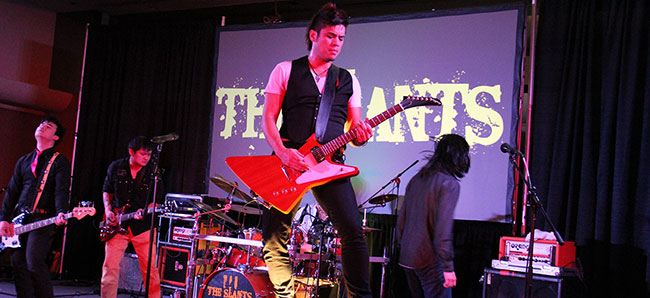It’s always exciting (at least for trademark lawyers) whenever the Supreme Court issues an opinion about trademark law. The court recently issued its opinion in Matal v. Tam, an appeal from the USPTO’s rejection of an application for a trademark for “THE SLANTS” as a band name. And the opinion is good news for mark owners with marks that could be considered offensive: the USPTO can no longer reject a trademark application based on its opinion of the mark. This means marks that can be considered “disparaging” trademarks may now be allowed.
The Facts
For decades, the USPTO would reject trademark registrations they viewed as disparaging trademarks.
Simon Tam is the lead singer of the rock group “The Slants.” In 2011, Mr. Tam sought to obtain a trademark for his band’s name. The PTO refused the application under 15 U.S.C. § 1052(a), claiming that the mark “consists of or includes matter which may disparage or bring into contempt or disrepute persons, institutions, beliefs or national symbols.” Apparently, “SLANTS” is a racial slur for Asians. Mr. Tam deliberately chose the name in order to reclaim the term and, hopefully, make it less forceful as an insult. Mr. Tam argued that the term had other, more likely meanings, but the PTO disagreed, and the Trademark Trial and Appeal Board (“TTAB”) affirmed the rejection.
For many applicants, that would have been the end of the story. A trademark appeal takes significant time and money. Mr. Tam, however, had the resources and willpower to fight. He appealed to the U.S. Court of Appeals for the Federal Circuit, the federal court of appeals with jurisdiction over appeals from TTAB decisions. There, Mr. Tam argued that the law prohibiting the registration of disparaging trademarks violated his First Amendment rights. A panel of three judges affirmed the PTO’s rejection of his application, but noted that it was time for the court to revisit whether § 1052(a) violated the First Amendment. The full court then heard the case and reversed, deciding that § 1052(a) was unconstitutional.
Mr. Tam had won this round, but the government appealed, and the U.S. Supreme Court agreed to hear the case. After disposing of a number of technical arguments that would have avoided the First Amendment question, the court easily dismissed the government’s argument the statute was not unconstitutional. Under intermediate scrutiny, the most favorable standard of review available to the government, the government was required to show that the restriction on speech in § 1052(a) served a substantial interest and was narrowly drawn. The court rejected a number of possible “substantial interests” which, in essence, expressed the idea that the government has an interest in preventing speech expressing ideas that offend. The court then considered the government’s interest in “protecting the free flow of commerce,” a general goal of trademark law that Judge Reyna had raised in his dissent in the Federal Circuit’s en banc opinion. But even accepting this as a valid interest, the court found that § 1052(a) was not “narrowly drawn” to accomplishing that goal, as the statute would allow the rejection of such non-disruptive trademarks as “down with racism” or “slavery is an evil institution” Accordingly, § 1052(a) could not pass intermediate scrutiny, and the court held that § 1052(a) violated the Free Speech Clause of the First Amendment.
What Does It Mean?
The Tam case, dealing with both trademarks and constitutional law, is fascinating to trademark lawyers. But what does it mean to ordinary business people?
The USPTO can no longer reject trademark applications because it views them as offensive or scandalous.
The short answer is: it removes one of the obstacles the PTO has historically been able to raise to deny applications. No longer can the PTO reject applications because they consider them disparaging trademarks. The removal of a subjective grounds for registration decreases the uncertainty for applicants and can only be a good thing.
Unfortunately, the other main takeaway from this case is the illustration of just how hard it can be to overcome a rejection. Mr. Tam’s application was rejected over a statute that was unconstitutional. Mr. Tam then lost his appeals to the TTAB and the Federal Circuit, before winning in front of the en banc federal circuit. Even then, he had to take the his case all the way to the Supreme Court. Some six years later, Mr. Tam has won his appeal, but, at least as of this writing, the PTO still has not registered his mark. Few people have the time, commitment or resources to fight such a difficult against the USPTO, and Mr. Tam should be commended for seeing this through.
It is now slightly easier for applicants to obtain trademark registrations. But the process is still a lengthy and technical — one with many opportunities for failure, and failure means not just a loss of your fees, it means you may have a potential infringement claim by a third-party. This is why there is almost a 60% failure rate for pro se trademark registrations (See Do Trademark Lawyers Matter?, Stanford Technology Law Review, Spring 2013, Starting with Figure 6 on Page 607).
Don’t be fooled by least-cost providers on the Internet. Consider hiring a properly licensed trademark attorney to help you avoid or overcome these problems, including a proper trademark assessment to give you a legal opinion on the strength of your mark and the chances of successfully registering your trademark.
Law 4 Small Business, P.C. (L4SB). A little law now can save a lot later.

